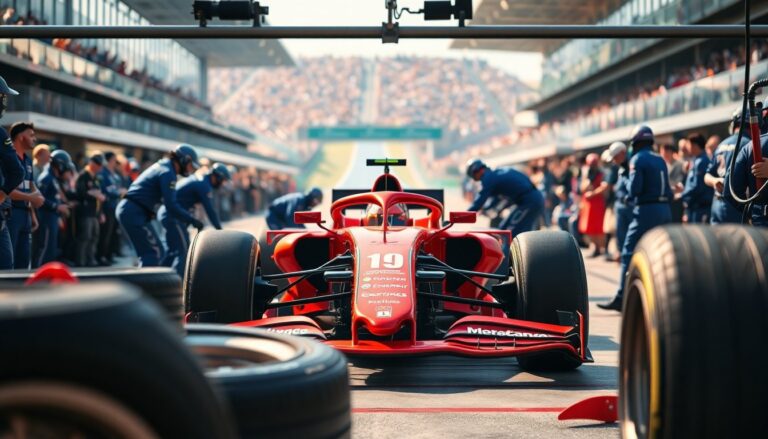Argomenti trattati
Formula 1, commonly known as F1, represents the peak of motorsport, highlighting not just speed but also engineering prowess and team strategy. Since its establishment in 1950, F1 has enthralled fans worldwide with its exhilarating races and compelling narratives. The sport’s evolution is a captivating chronicle, shaped by significant advancements in technology, regulations, and safety standards.
The early years of Formula 1
During its formative years, Formula 1 was defined by its raw power and the thrill of uncertainty. Vehicles were constructed with minimal safety features, making races perilous and requiring drivers to take considerable risks. The inaugural F1 World Championship took place in 1950, featuring legendary circuits such as Silverstone and Monza. Early champions like Giuseppe Farina and Juan Manuel Fangio laid the groundwork for the legends that would subsequently emerge.
The evolution of technology in motorsport
During the 1960s and 1970s, technology increasingly influenced the sport of motorsport. The advent of aerodynamics revolutionized car designs, prompting teams to explore diverse shapes to enhance speed and handling. The Lotus 49, launched in 1967, was among the first to utilize a monocoque chassis, significantly improving safety while boosting performance. This period also witnessed the rise of sponsorships, initiating a commercial transformation that would profoundly reshape the motorsport landscape.
Safety and regulation advancements
The 1980s and 1990s marked a significant shift in the focus on safety within Formula 1, driven by a series of tragic accidents that resulted in the loss of several drivers. This period saw the introduction of the HANS device (Head and Neck Support), a groundbreaking innovation that enhanced driver protection during crashes. In response to these challenges, the FIA, the governing body of Formula 1, established stricter regulations. These rules mandated the use of stronger materials and led to improvements in cockpit design, fundamentally changing the safety landscape of the sport.
The impact of technology on performance
As Formula 1 entered the 21st century, the sport experienced a transformative shift towards hybrid technology. The implementation of energy recovery systems (ERS) and turbocharged engines not only enhanced environmental sustainability but also introduced a new dimension to race strategy. Leading teams such as Mercedes and Ferrari capitalized on these innovations, demonstrating how the fusion of speed and efficiency has redefined modern racing.
The cultural significance of Formula 1
Formula 1 transcends technical excellence; it has evolved into a global cultural phenomenon. The sport boasts a devoted fan base, uniting enthusiasts across continents. Iconic events, such as the Monaco Grand Prix and the Italian GP at Monza, serve not merely as races but as grand celebrations of automotive culture.
The impact of Formula 1 extends into popular media and fashion, influencing trends and lifestyles. Social media has transformed how fans interact with teams and drivers, creating a vibrant community that engages in unprecedented ways. This interconnectedness amplifies the sport’s reach and underscores its significance beyond the racetrack.
Globalization and fan engagement
The emergence of social media platforms has transformed how Formula 1 connects with its audience. The introduction of the Netflix series “Drive to Survive” has played a crucial role in increasing interest in the sport. It has attracted new fans who may not have previously engaged with F1. Furthermore, the calendar now features races in vibrant locations, from the streets of Las Vegas to the deserts of Bahrain, highlighting a global appeal that was unimaginable in the sport’s early history.
As Formula 1 adapts to changing times, it leads in technological innovation and cultural significance. With a strong focus on sustainability and enhancing fan involvement, the future appears promising for this esteemed sport. Whether through the thrilling sound of engines or the strategic maneuvers on the track, F1 continues to captivate and inspire audiences for generations to come.

